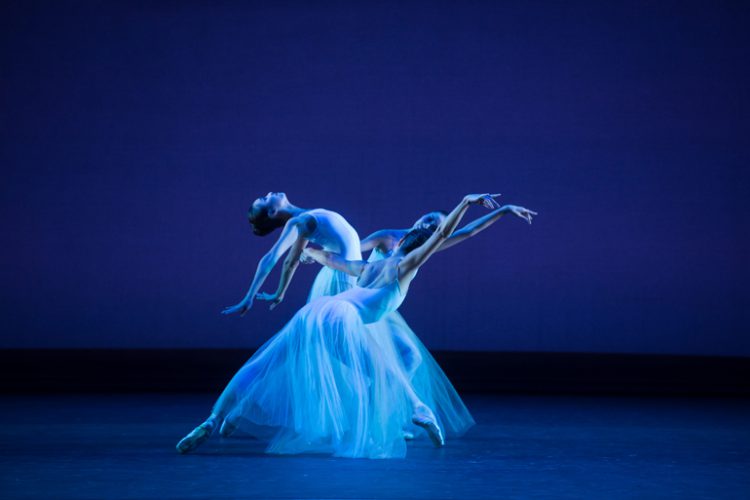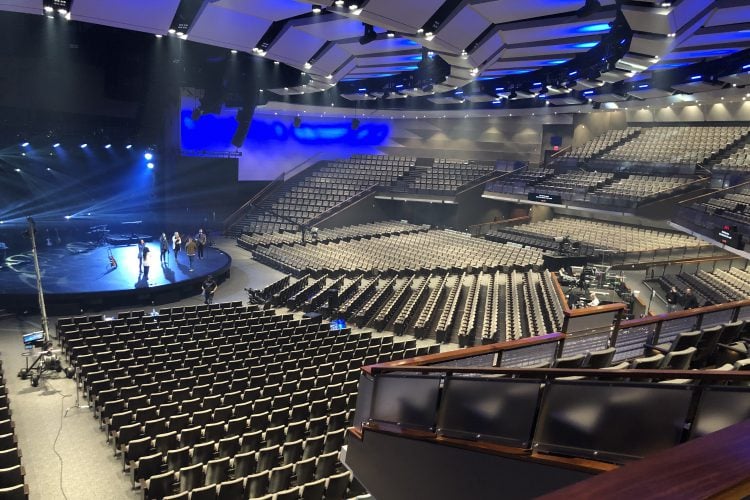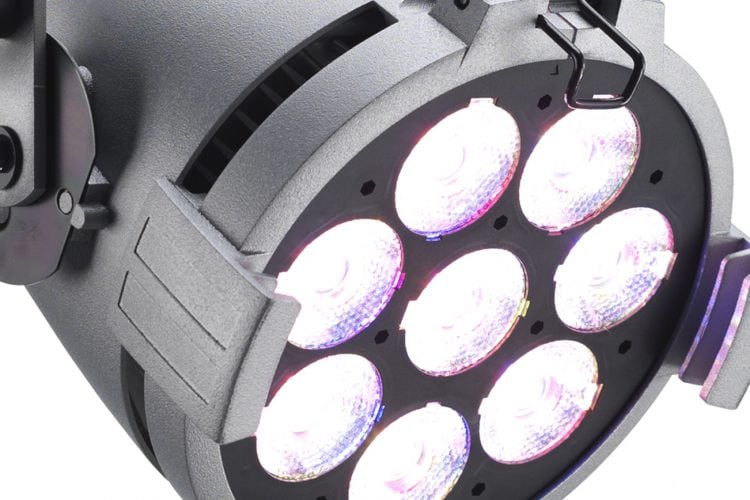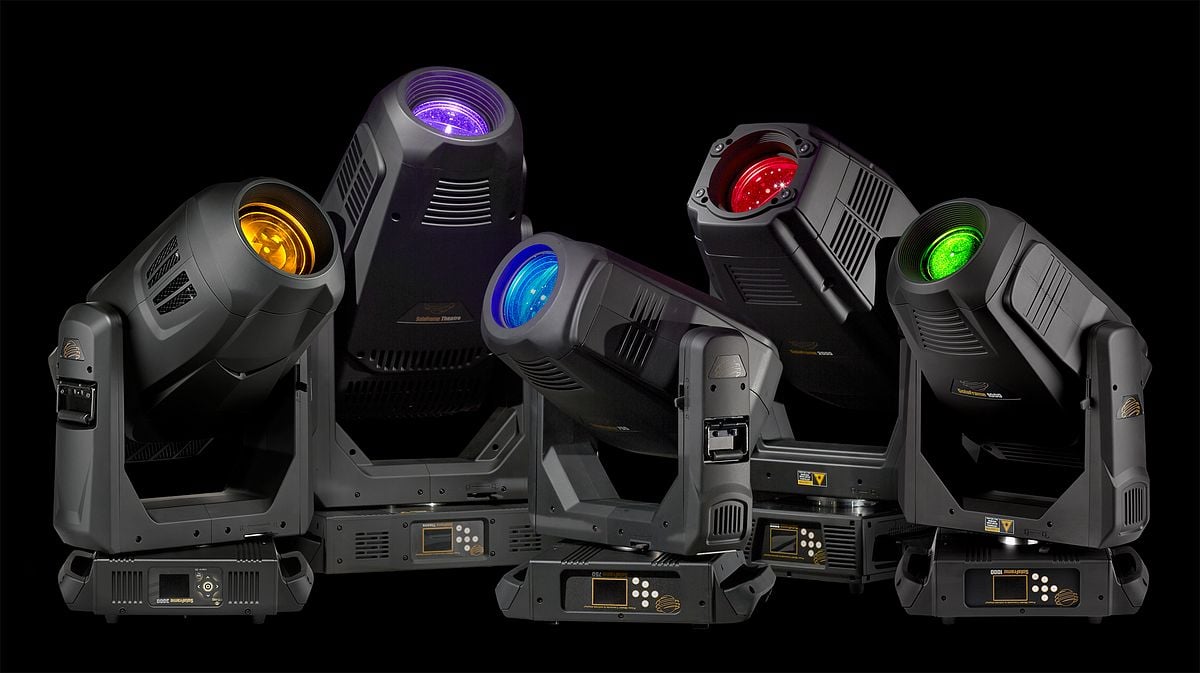This article, written by ETC Entertainment Market Manager Luke Delwiche, first appeared in the Swedish Theatre Technology Association (STTF) magazine, proScen, in 2015. Luke wrote the article after talking to dozens of people who made purchasing decisions based on “white wall shootouts,” which aren’t a very good way to evaluate LED stage lighting luminaires.
How to choose the right LED stage lighting
It’s 1999 and you have budget approval to buy some new stage lights. They are almost certainly going to use a tungsten-halogen source; that’s more or less a given. You narrow it down to a few candidates, all of which have good build-quality, a good brand name, and good optics. How do you decide which one is for you? It’s likely that you go for the brightest one, and that’s probably not a bad way to choose.
It’s 2015 and you again have budget approval to buy some new stage lights. But – the budget approval is based on choosing low-energy sources. Probably even the non-technical financial people used the term “LED.” But what kind of LED? Warm white? RGB? RGBA? x7? Do you just choose the brightest?
This article hopes to help you choose the right LED stage luminaire. A light touch on the science (very light, I promise!) will lead you to some tests to run before deciding. Please note that this article is quite tightly focused on LED-based luminaires for lighting a stage. If you’re looking for architectural, studio, or effect lighting, the science doesn’t change – but the importance of it might! It is also assumed that you will continue to use your existing tungsten-halogen lights alongside your new LED lights, and that you want the result to look good!
Brightness
First, let’s talk about brightness. Quantifying brightness isn’t actually very easy, and human perception of brightness is an extraordinarily complex field of study. We’ve all seen how a single candle onstage can light an entire scene, and how a 5K HMI Fresnel can get lost in another. So – we know that perception of brightness is relative.
However, measurement of brightness is fraught with difficulty as well. When we talk about brightness, we talk about lumens – but lumen measurement is best-suited to very wide flood sources, such as a conventional home lightbulb. Methods for lumen reporting vary, and there is no consensus on how to report “brightness” for stage lighting. As such, it is probably not very valid to look at the datasheet for product A and product B from two different manufacturers to decide which is brighter.
Additionally, we must talk about “usable lumens”. If an example RGB source claims 4,000 lumens, that is probably based around all of the LED emitters being on at their maximum. Experience tells us that that is not a colour that we are likely to use to light a stage – the sort of alien “LED pink” that we all really want to be a nice white. Once you create the actual colour that you want (or close to it), how many lumens will the light be? Probably a lot lower number.
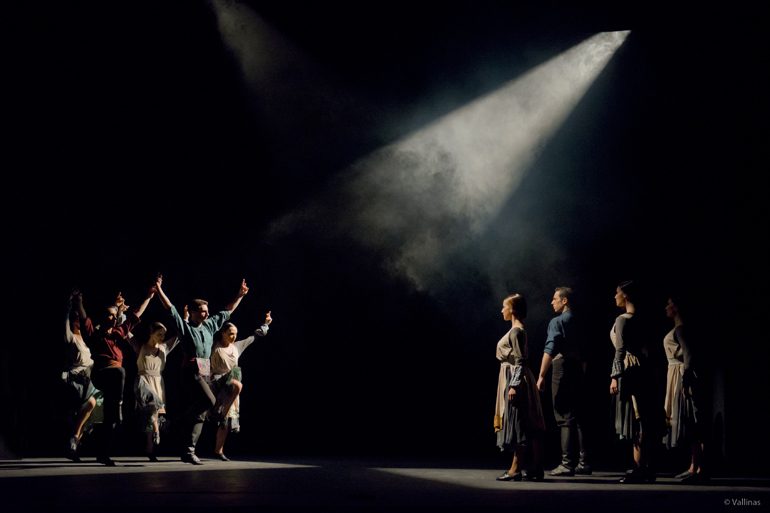
Dimming
The fade. Nothing is more theatrical than the perfect fade to or from blackout – so much so that even car manufacturers have appropriated the term “theatrical fade” when bragging about their interior lighting. A steppy, uneven, or in any way poor-quality fade is noticed by even the casual audience member (some of whom today might now control the lighting in their home with their smartphone).
A nice fade over three seconds is reasonably easy – but over 20 or 30 seconds? Much more difficult. LED emitters are solid-state devices, and really don’t “dim” in the same way as an incandescent lightbulb. To achieve fades, PWM (pulse-width modulation) is generally preferred, which means the LED is turned on and off hundreds – if not thousands – of times per second. At very low levels (say 3%), precise PWM timing is required, which means a relatively high-specification microcomputer and clever software – neither of which is normally found in the average “LED PAR” from a catalogue.
On the subject of fades – when an incandescent source dims, the colour becomes warmer (redder). This is a natural phenomenon, and there isn’t anything you can do to prevent it. As a result, if you dim a 750W profile with Lee 202 gel, the colour at 50% is quite different to the level at full. When you dim an LED source, this phenomenon doesn’t occur – remember that you aren’t really dimming it, but rather turning it on and off very quickly and relying on persistence of vision of the observer.
As a result, that nicely-balanced scene comprised of both tungsten-halogen and LED sources might look dramatically different when dimmed to 50%. With colour-changing LED fixtures, you may be able to compensate, but will you have the time to adjust every scene? Some LED lights have an automatic “red shift” function whereby as the level decreases, the colour mix becomes warmer. Fantastic! On the other hand – the ability to dim a light and not have a colour change can also be fantastic…so it’s nice to have this feature as an option you can turn on or off.
Colour Rendering
Colour rendering, or how well a light source faithfully renders the “true” colours of an object, is certainly a hot topic in stage luminaires. We all learned in school that with red, green and blue you can create any colour – if only that were true! LEDs are narrow-band emitters, which means that they only produce light in a very narrow range of the spectrum. Even phosphor-assisted LEDs have definite peaks. As a result, in order to simulate the colours in between via additive mixing with different emitter colours, you end up with a very non-smooth spectrum – mixing red and green together to create amber may work well on a white canvas, but it will tend to over-emphasise the reds and greens in a more complex texture – like costumes, props, set pieces… even actors! In general, creating mixes with a greater number of LED colours will result in better colour rendering and fewer problems with illuminant metameric failure (worth Googling!).
Droop
As LED emitters warm up, their output drops. So, if you drive an LED to a given level, over time (minutes, generally speaking), it will experience “droop” and no longer be as bright. For single-colour fixtures (for example, a cool-white studio fixture) this isn’t necessarily a big concern – just something to plan for. With colour-mixing stage lights, it is a larger concern, as the droop level and rate for each emitter colour may vary. The result? Not only a decrease in brightness but also a (sometimes dramatic) colour shift. Imagine that you start a scene in one colour and end in another with the same data being sent!
Batch Consistency
Batch consistency is another concern. As LEDs are a solid-state device, there is manufacturing variation between individual emitters. A technique called “binning” is used for most solid-state devices, whereby devices (be they CPUs or LEDs) are characterised so that two from the same bin should behave more or less the same. As LED technology is a fast-moving field, sometimes given bins are discontinued and may only have a short lifespan. Relying on finding two luminaires which use the same binning of LEDs in order to have matching output colours is not really practical – a better approach is for each individual luminaire to be characterised in terms of its luminous flux, chromatic possibilities, etcetera. This data (what that light can do, and how to do it) is stored with the luminaire itself and control is abstracted – you send Hue/Saturation or other control data, and internally the device decides what that means in terms of driving the emitters.
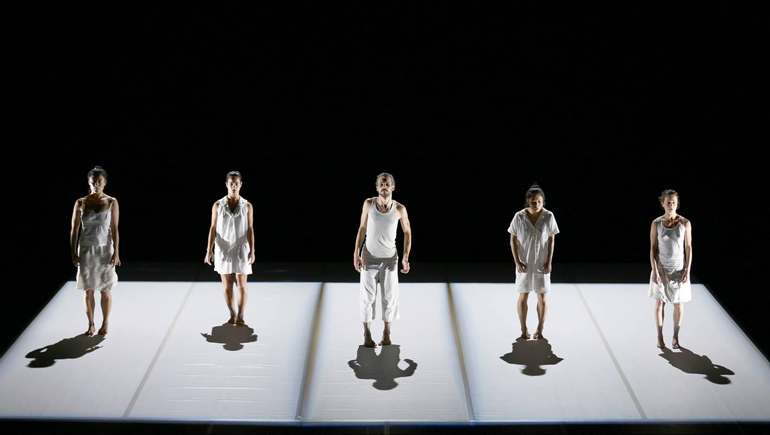
Efficacy
Remember from the beginning of this article that the goal was to save energy? So it is important to determine if the LED luminaire actually does that! Lumens per watt is a good starting point (how much light output for how much power input), but of course there are other factors. Especially of interest is “quiescent power,” or how much power a luminaire draws when not creating any light – it is important to sum up the power used overall, not just during a show.
Noise
The science of human response to sound pressure is as complex as our response to brightness. As such, simply relying on dBA information from the datasheet isn’t necessarily a valid way to judge fan noise from two different luminaires. Frequency, noise floor, location, etcetera, all come into play, and the logarithmic nature of dB reporting as well as the non-linear summation of multiple sources adds additional complexity.
Summary
With all of these complex and perhaps contradictory aspects, what is the message? How should one decide which is the right light for the job? Fortunately, there is an answer: see it with your own eyes! Too often, decisions are made based on looking at two or three luminaires in a “shootout” scenario, with all three lights pointed at the closest convenient white surface. However, unless your shows tend to consist of lights at full and pointing at a white surface (shadow-puppet shows, perhaps?) this is not really the best tactic.
I stated at the beginning of the article that one of the assumptions is that you will keep using at least some of your existing tungsten-halogen lights. For purposes of evaluating an LED source, it’s probably not so important that you compare the traditional and LED side-by-side to make sure that they are the same – what is more important is how well do they work together, each doing their own job. If you have a frontlight system made up of 2KW profiles and are looking at LEDs for boom positions, look at them together as they would be used in a show.
If you are looking at new high-output LED profiles for use as frontlight, ensure that you have enough to try blending them along with the rest of the rig. Also make sure that you leave them on for hours, not minutes, to see if there is a brightness and/or colour shift – and also to hear what they would sound like at the end of the show! Create the sort of pastel warm and cool colours that are routinely used in theatre. Try to find a day when the stage is set and when you can look at the results in “real life,” not just at a wall. Look at the long fades. Look at the snap cues. Set a scene, then look at it at 50%. Put the profiles in sharp focus with a gobo, but also de-focussed in a breakup pattern.
Most importantly, don’t be afraid to get in touch with the experts and ask questions!
Get a checklist of LED stage-lighting tests here.
*First photo: Serenade, Hong Kong Ballet, photo © Cheung Wai Lok


